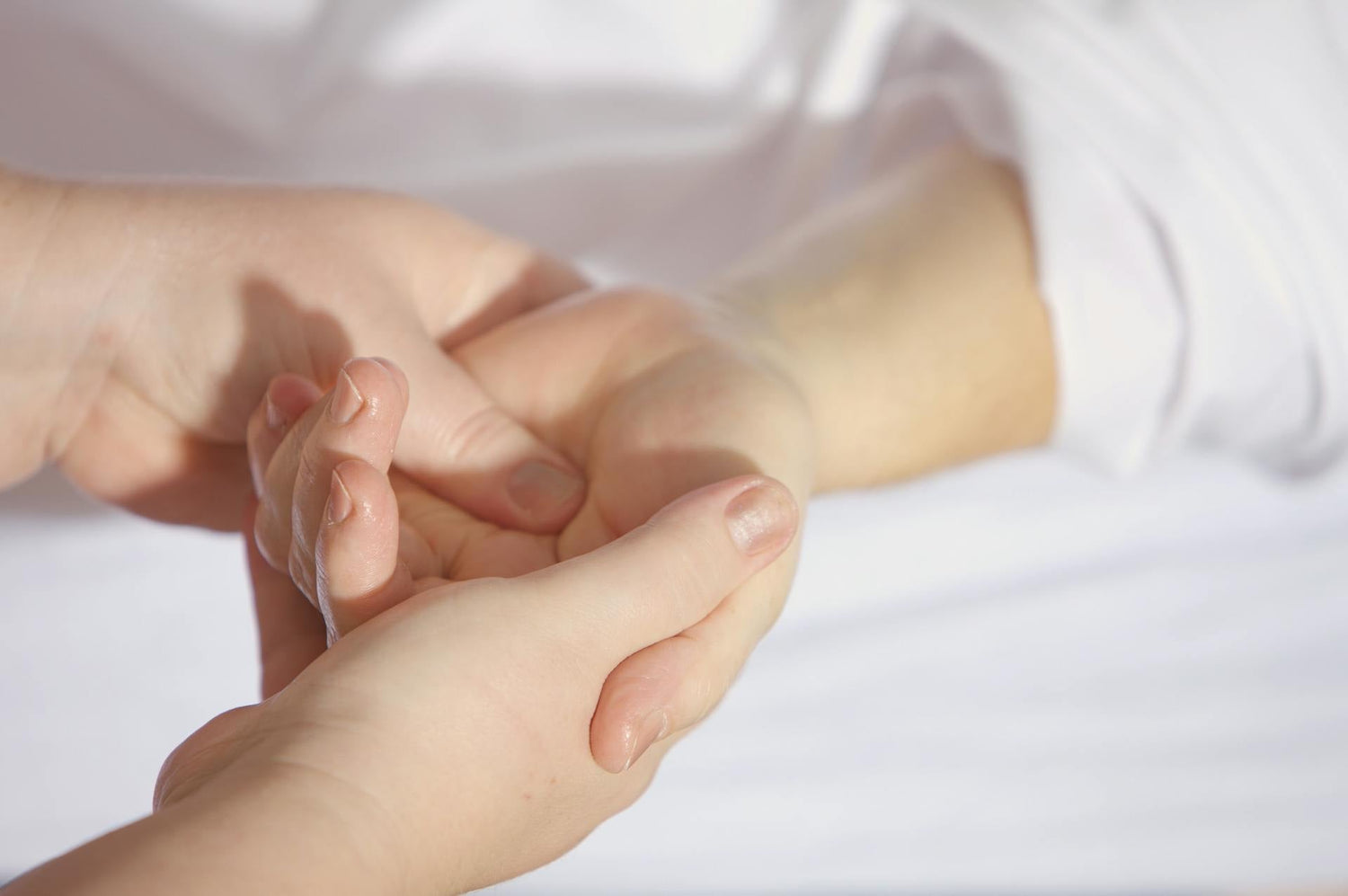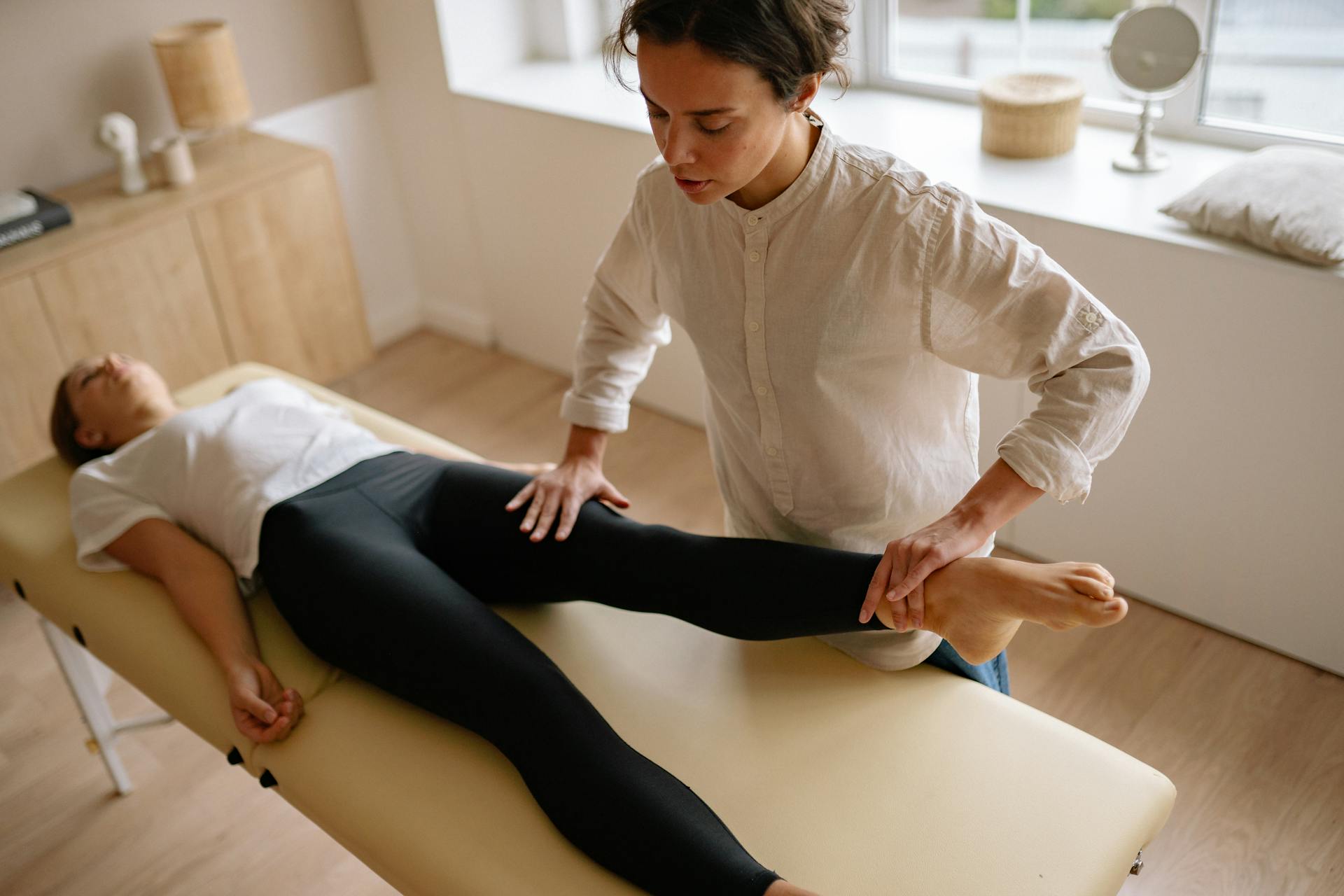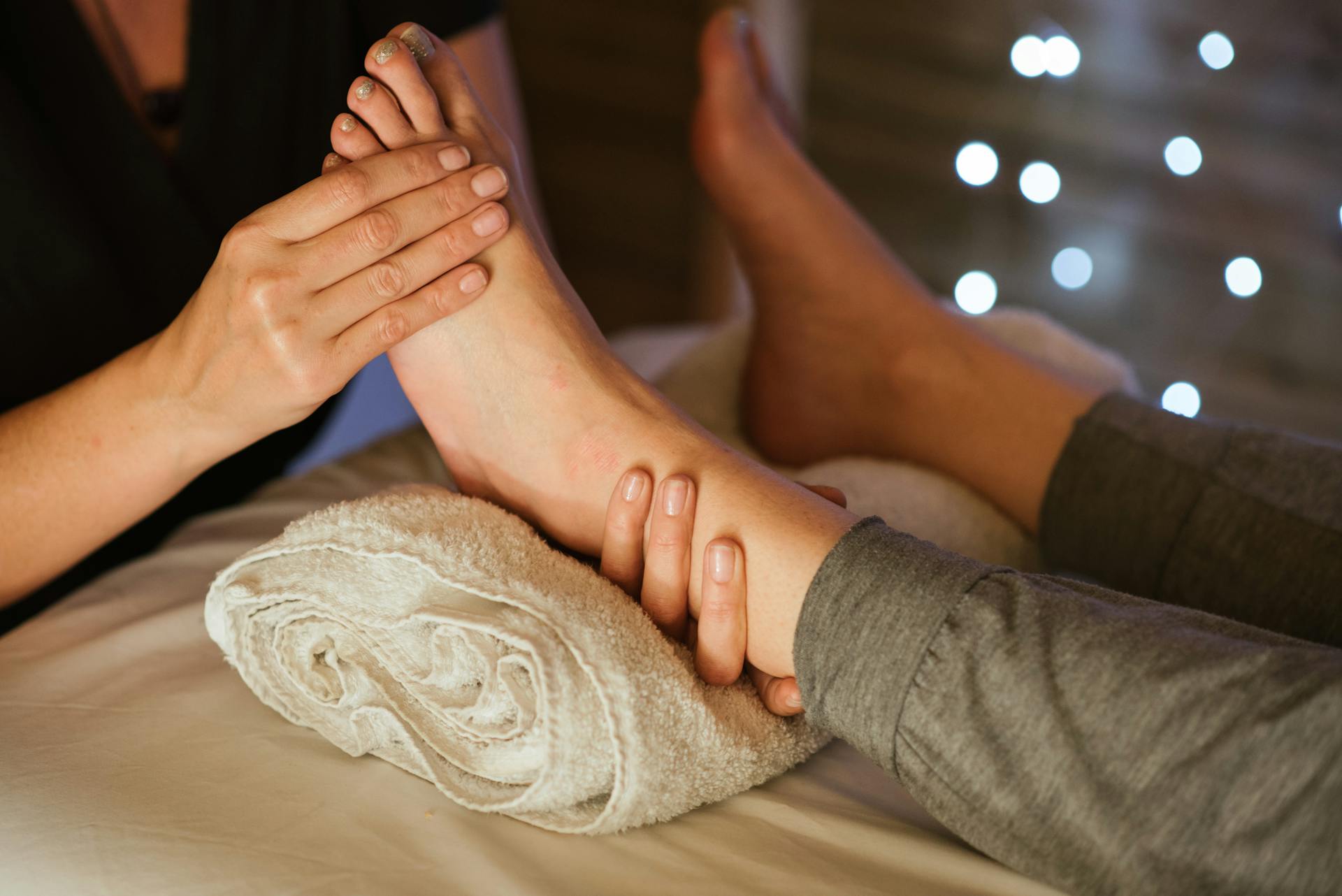Desde sostener el café de la mañana hasta conducir y escribir en la pantalla del teléfono, nuestras manos nos ayudan a realizar miles de tareas pequeñas (y no tan pequeñas) cada día. Pero cuando se trata del cuidado personal, es posible que nunca pienses en ellas, hasta que sientes que te duele o te duele.
¿La buena noticia? El masaje es una manera fácil de aliviar los músculos de las manos sobrecargados y sus beneficios pueden ir más allá del alivio del dolor.
Continúe leyendo para descubrir siete poderosos beneficios del masaje de manos, además de una guía paso a paso sobre cómo comenzar.
¿Quién podría beneficiarse de un masaje de manos?
Incluso si no le duelen las manos, casi cualquier persona puede experimentar los efectos positivos de un masaje relajante de manos. Sin embargo, las personas que tienen trabajos exigentes, estilos de vida activos o desgaste relacionado con la edad, o incluso aquellas que buscan aliviar la ansiedad, podrían beneficiarse más. Esto podría incluir:
- Adultos mayores o personas mayores
- Obreros que utilizan sus manos todo el día
- Trabajadores de oficina, jugadores o cualquier persona que pase mucho tiempo frente a la computadora.
- Pacientes que buscan aliviar la ansiedad antes o después de un tratamiento.
- Atletas que lanzan, golpean, trepan o practican deportes de raqueta.
7 beneficios para la salud del masaje de manos
La mayoría de las personas saben de primera mano lo relajante que puede ser un masaje. Pero cuando se trata específicamente del masaje de manos, aquí hay siete beneficios importantes que debe conocer:
1. Puede mejorar la fuerza de agarre
Probablemente hayas escuchado que el masaje es excelente para la recuperación muscular, pero los estudios sugieren que puede aportar otro beneficio clave para tus manos: un aumento en la fuerza de agarre.
En un estudio de 2016 , los investigadores reunieron a 44 hombres jóvenes sanos para comparar los efectos del masaje de manos frente a una intervención de movimiento pasivo sobre la fuerza y la resistencia del agarre. Dividieron a los participantes en dos grupos;
- El grupo de masajes recibió un masaje de manos y antebrazos de cinco minutos, centrado principalmente en técnicas como effleurage (deslizamiento) y amasamiento.
- En el grupo de movimiento pasivo , se guió a los participantes a través de un movimiento de movilidad. Los investigadores movieron los hombros, los codos, las muñecas, los antebrazos y los dedos dentro de su rango de movimiento normal, con cinco repeticiones para cada movimiento.
Después de las sesiones, los resultados mostraron algo sorprendente: quienes recibieron masajes en las manos tuvieron un mayor aumento en la resistencia de agarre en comparación con los del grupo de movimiento pasivo. Los autores del estudio señalaron que la mejora a corto plazo en el agarre es prometedora, pero aún necesitamos estudios a más largo plazo para ver si el masaje regular podría traer beneficios duraderos para la fuerza de las manos.
2. Reduce el estrés
¿Otro beneficio poderoso del masaje de manos? Su capacidad para aliviar el estrés y la ansiedad. En un pequeño ensayo de 2012 , un breve masaje de manos ayudó a disminuir la frecuencia cardíaca de los participantes, lo que sugiere que también podría desencadenar la respuesta de relajación del cuerpo.
Esta respuesta también se denomina modo de “descanso y digestión” del cuerpo y la activa el sistema nervioso parasimpático. A diferencia del sistema de lucha o huida, este sistema se activa cuando el cuerpo detecta que es seguro relajarse, como durante un masaje.
Además de un ritmo cardíaco más tranquilo, quienes recibieron el masaje también informaron sentir menos ansiedad después, al mismo tiempo que se volvieron más positivos y abiertos hacia la persona que lo dio.
3. Favorece el flujo sanguíneo
Si tiende a tener las manos o los dedos fríos, un simple masaje de manos puede ser una forma fácil de combatirlo. Esto se debe a que la presión y la fricción pueden literalmente "calentar" sus manos, lo que a su vez estimula el flujo de sangre fresca y rica en oxígeno a través de los músculos.
El rápido aumento de la circulación que produce el masaje no solo es útil en temperaturas frías. También puede ayudar a mantener la salud general de las manos al:
- Aliviar la rigidez causada por movimientos repetitivos, como escribir o enviar mensajes de texto.
- Mejorar la flexibilidad
- Ayuda a recuperarse del dolor muscular y de lesiones por uso excesivo.
4. Puede aliviar el dolor de la artritis
Las manos y las muñecas, que tienen decenas de articulaciones que están casi siempre en movimiento, tienden a sufrir mucho desgaste, lo que puede convertirlas en puntos sensibles del dolor relacionado con la artritis, especialmente en personas mayores.
Afortunadamente, los estudios citados por la Arthritis Foundation sugieren que el masaje de manos y antebrazos puede funcionar para aliviar el dolor de la artritis. Además, también podría proporcionar otros beneficios importantes para las personas que viven con esta afección, como fortalecer las manos, mejorar el estado de ánimo y aliviar los síntomas de ansiedad.
5. Promueve la movilidad y la flexibilidad
Además de aliviar el dolor, el masaje puede funcionar como una herramienta poderosa para aumentar la amplitud de movimiento de las manos y los dedos. Esto se logra mediante:
- Aflojar y movilizar suavemente los músculos, lo que puede facilitar que las articulaciones giren con mayor libertad.
- Romper adherencias , bandas apretadas de tejido y pequeños nudos que se pueden formar debido al uso excesivo.
- Calentar el tejido muscular , lo que puede ayudar a la elasticidad.
Por estas razones, el masaje regular puede ser una excelente opción para mantener las manos flexibles y ágiles a lo largo del tiempo, especialmente si has notado más rigidez a medida que envejeces.
6. Favorece el sueño
Cuando te sientes inquieto por la noche, un buen masaje de manos puede ayudar a que tu cuerpo y tu mente pasen a un estado más relajado, lo que hará que sea más fácil conciliar el sueño y permanecer dormido.
En un pequeño estudio de 2020 , los investigadores analizaron los efectos de un masaje de manos y un baño de manos tibio en la calidad del sueño de las mujeres mayores. Descubrieron que, cuando se usaban juntos, estos remedios ayudaban a las mujeres a conciliar el sueño más rápido y mejoraban su eficiencia general del sueño.
7. Puede ayudar a aliviar los síntomas del túnel carpiano
Si su rutina diaria implica muchos movimientos repetitivos de las manos, es posible que sea una de las millones de personas que padecen el síndrome del túnel carpiano (STC). La buena noticia es que un simple masaje de manos y muñecas puede brindarle algo de alivio.
En un pequeño estudio de 2013 , 21 pacientes con síndrome del túnel carpiano recibieron un masaje de 30 minutos dos veces por semana durante seis semanas. Al final del estudio, los participantes informaron que sentían menos molestias e incluso mostraron una mejora en la función de la mano.
Por supuesto, es importante seguir el plan de tratamiento de su médico para cualquier problema de salud, como el síndrome del túnel carpiano. Pero si está buscando formas de mejorar su bienestar y controlar los síntomas, puede que valga la pena preguntar si el masaje podría adaptarse a su rutina.
Cómo darse un masaje de manos: paso a paso

Darte un masaje de manos a ti mismo (o a otra persona) puede parecer bastante sencillo, y sin duda puede serlo. Pero si quieres ser más consciente del cuidado de tus manos y muñecas, aquí tienes algunas técnicas de masaje específicas que puedes probar:
1. Amasar y deslizar para calentar las manos
Cualquier buen masaje comienza con un minuto o dos de “calentamiento” de los músculos para prepararlos para una presión más profunda, y lo mismo ocurre con las manos y las muñecas. A continuación, te explicamos cómo hacerlo:
- Sujete una mano con la otra. El pulgar debe descansar sobre la palma y el resto de los dedos deben rodear el dorso de la mano.
- Con una ligera presión, comience a realizar compresiones suaves a lo largo de la mano. Repita el procedimiento durante 30 segundos.
- Repita las compresiones hacia arriba y hacia abajo del antebrazo, desde el codo hasta la muñeca, durante 30 segundos más.
- Opcionalmente, aplique una gota de aceite o loción en el antebrazo. Luego, realice movimientos de deslizamiento para calentar los músculos durante 30 segundos más.
2. Trabajo con el pulgar
A continuación, puedes utilizar el pulgar para aplicar un masaje más profundo y específico en las manos. Esta técnica es ideal para aliviar los músculos que suelen pasarse por alto y que forman la base de la palma, así como los numerosos músculos diminutos de los dedos. Simplemente:
- Sostenga la mano que desea masajear frente a usted, con la palma hacia usted.
- Utilice la mano opuesta para pellizcar ligeramente la yema del músculo en la base del pulgar. (Esto se llama eminencia tenar ).
- Presione el pulgar sobre la almohadilla muscular con una presión leve a moderada. Luego, utilice movimientos deslizantes cortos para masajear el músculo, tomándose un tiempo adicional para concentrarse en las áreas sensibles. Repita durante 30 segundos.
- A continuación, utilice el pulgar para repetir la técnica de masaje en la zona acolchada del músculo debajo del meñique (también llamada eminencia hipotenar ). Repita durante 30 segundos más.
- Para finalizar, utiliza el pulgar para masajear con pequeños movimientos deslizantes o circulares por el resto de la mano. ( Consejo : ¡No olvides dedicar unos segundos a cada dedo!)
3. Estiramientos y tirones de los dedos
Agregar un poco de estiramiento y tracción de los dedos a su sesión puede ser una forma sencilla de aprovechar al máximo los beneficios de flexibilidad del masaje. Para probarlo:
- Aplicar una gota de aceite o loción en la mano.
- Utilice el pulgar y el índice de la mano opuesta para agarrar la base del pulgar. Apriete y deslice hacia arriba para masajear el tejido.
- Luego, tire suavemente del pulgar hacia atrás para sentir un ligero estiramiento. Mantenga la posición durante 3 a 5 segundos.
- Repita con cada dedo.
4. Trabajo de antebrazo y muñeca
Los extensores del antebrazo (los músculos que se encuentran en la parte superior del antebrazo) y los flexores (los músculos que se encuentran debajo del antebrazo) realizan gran parte del trabajo que se realiza detrás de escena cuando mueves las manos. Por ejemplo, los extensores se activan cada vez que levantas la palma hacia arriba, y los flexores te ayudan a curvar la mano hacia adentro.
Teniendo esto en cuenta, un masaje de manos no está del todo completo sin dedicar algo de tiempo también a los antebrazos . Para incluir un trabajo más profundo en estos músculos, puedes:
- Comience con algunas compresiones ligeras a lo largo de los músculos durante 30 segundos.
- Luego, cierra el puño con la mano que masajeas y desliza los nudillos por la parte superior de los músculos del antebrazo, comenzando por el codo y bajando hasta la muñeca.
- Repita con la parte inferior del antebrazo para trabajar los músculos flexores.
- Opcionalmente : para un masaje más profundo, mueva lentamente la mano del brazo que está masajeando hacia arriba y hacia abajo para agregar un estiramiento mientras aplica presión.
¿El masaje de manos es seguro para todos?
Para la mayoría de las personas, un masaje suave con las manos es una buena opción, especialmente si se comienza con una presión leve y se utilizan técnicas sencillas y fiables. Sin embargo, es mejor consultar primero con el médico si se tiene:
- Osteoporosis o cualquier otra condición que afecte la densidad ósea
- Una lesión reciente en la mano o cerca de ella, como un desgarro o una fractura muscular.
- Bursitis, gota, un brote doloroso de artritis o cualquier otra afección articular que pueda agravarse con la presión.
- Una infección o enfermedad
- Una afección de la piel que podría agravarse o propagarse a través del tacto.
- Afecciones nerviosas que afectan las manos y los dedos.
- Cualquier condición de salud no controlada que no haya sido aprobada previamente para recibir masajes.
En caso de duda, no dude en consultar con un profesional de la salud para ver si el masaje puede adaptarse a su rutina y de qué manera.
¿Con qué frecuencia debería recibir un masaje de manos?
Si lo que busca es mimar sus manos y dedos, un masaje de manos diario (o nocturno) de 10 minutos puede hacer maravillas. Incluso si se realiza unas cuantas veces por semana, puede ayudar a aliviar el estrés, aliviar el dolor y darle a los músculos y articulaciones de las manos la oportunidad de recuperarse del desgaste diario.
Si tiene artritis, síndrome del túnel carpiano u otra afección que desea aliviar con masajes, un masajista profesional puede ayudarlo a crear un programa que se adapte mejor a sus necesidades.
Otros consejos para tener unas manos sanas
Además del masaje habitual, aquí hay tres sencillos pasos que puede seguir para cuidar la salud de sus manos, dedos y muñecas a largo plazo:
Fortalecer y estirar
La mayoría de nosotros sabemos que la fuerza es importante, pero ¿sabías que la fuerza de agarre es un indicador importante de la salud general a medida que envejecemos? Se la ha vinculado con la masa muscular, la fortaleza ósea y otros signos de vitalidad en los adultos mayores.
Si bien un agarre fuerte no necesariamente lo hará más saludable, fortalecer y estirar regularmente las manos puede marcar una gran diferencia en su función a medida que envejece. A continuación, se indican dos movimientos simples que pueden ayudarlo a lograrlo:
Flexiones y extensiones de muñeca
Flexionar y extender la muñeca es una de las formas más sencillas de estirar los músculos de la mano (y del antebrazo), algo que tanto necesitan. Estos son los pasos:
- Estire un brazo frente a usted, con la palma hacia abajo.
- Con la mano opuesta, tire hacia atrás de las puntas de los dedos hasta sentir un estiramiento suave en la palma, los dedos y la parte inferior del antebrazo. Mantenga la posición durante 10 segundos.
- Luego, es momento de estirar los músculos extensores. Dobla la mano hacia abajo y usa la mano opuesta para presionar suavemente hacia abajo hasta que sientas un estiramiento en la parte superior del antebrazo.
- Mantener durante 10 segundos.
Aprieta
Los apretones son el ejercicio más simple para desarrollar la fuerza de las manos y se pueden hacer prácticamente en cualquier lugar. Todo lo que necesitas para comenzar es una pelota semi blanda que ofrezca cierta resistencia y sea lo suficientemente pequeña como para caber en tu mano, como una pelota de ráquetbol.
Comience sosteniendo la pelota con una mano. Luego:
- Apriete firmemente hasta que sienta que los músculos de la mano y el antebrazo se activan.
- Mantener durante 7 a 10 segundos.
- Haz 2 o 3 series de 8 a 10 repeticiones. Luego, repite con la mano opuesta.
Tomar descansos
Ya sea que estés en el trabajo, navegando en tu teléfono o en el gimnasio levantando pesas, ¡no olvides darle descansos a tus manos! Los descansos regulares de las actividades extenuantes, incluso las que no parecen muy intensas, como escribir a máquina, pueden ayudar a descomprimir las muñecas y reducir el riesgo de sufrir dolor en las manos relacionado con el uso excesivo.
Consulte con su médico sobre sus preocupaciones por el dolor de manos
Por último, no ignore ninguna señal de advertencia que indique que sus manos podrían estar cambiando con el tiempo. Si se anticipa a afecciones como la artritis o los problemas de tendones, puede minimizar el daño a largo plazo y mantener sus manos funcionando mejor a largo plazo.
Asegúrese de hablar con su médico si:
- Ha notado un nuevo entumecimiento u hormigueo en los dedos.
- Su fuerza de agarre se siente más débil o diferente de lo que solía ser
- Tiene dolor en la mano que no mejora con descanso y remedios caseros normales.
- Nota hinchazón u otras deformidades cerca de las muñecas o las articulaciones de los dedos.
- Tus manos se sienten rígidas con más frecuencia
La comida para llevar
Ya sea que desee aliviar el dolor o simplemente darle a sus manos un poco de cariño adicional, vale la pena probar el masaje. Puede ayudar directamente a la salud de las manos al aliviar el dolor, mejorar la movilidad y promover una circulación saludable. Y, en términos más generales, incluso podría ayudarlo a dormir mejor y aliviar el estrés diario.
Las manos son solo una parte del cuerpo que puede beneficiarse de un masaje. Pero con las herramientas adecuadas para el hogar, puede aliviar dolores y molestias en cualquier parte, ya sea la espalda, los hombros o los pies, todo desde la comodidad de su hogar.
Explore la amplia gama de herramientas confiables para el hogar de MedMassager para comenzar o aprenda más sobre sus numerosos usos relajantes hoy mismo.



